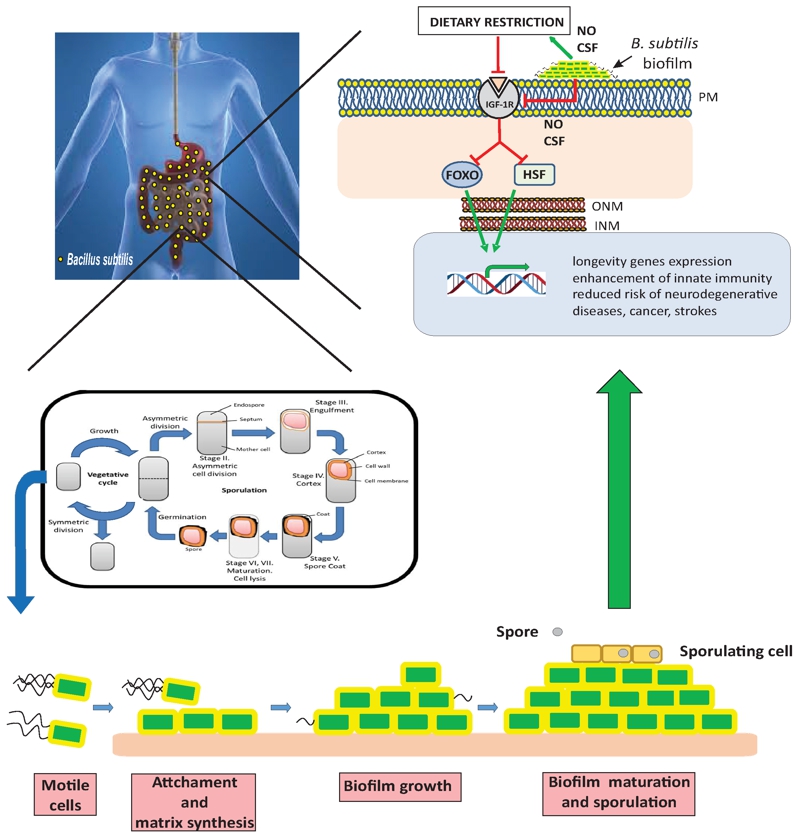Back to article: Microbial flora, probiotics, Bacillus subtilis and the search for a long and healthy human longevity
FIGURE 1: A workable model of how probiotic B. subtilis improves host health and longevity.
Once spores of the probiotic bacterium B. subtilis are incorporated in the diet and consumed, they survive the transit through the stomach and reach the human intestine (Left cartoon). These gut spores germinate and the active form of the probiotic (vegetative cells of B. subtilis) emerges, multiples and forms a beneficial biofilm in the host intestine (Bottom cartoon). Biofilm B. subtilis cells produce a continued and coordinated provision of beneficial and anti-aging NO and CSF molecules to the host tissues (bottom and right cartoons). At genetic level, longevity is regulated by the activity of the gene-transcription factors FOXO and HSF (Right cartoon). The binding of insulin-like molecules activates insulin receptor which in turn activates a series of protein kinase enzymes that phosphorylate FOXO, keeping it inactive in the cytoplasm. Additionally, active insulin receptor is responsible for the formation of an inhibitory protein complex that sequesters HSF in the cytoplasm. Beneficial signals (NO, CSF and others) derived from the biofilm established by B. subtilis produce a direct or indirect (through DR activation) downregulation of insulin receptor (Right cartoon). Upon downregulation of the insulin receptor, FOXO and HSF become active in the nucleus. There, both prolongevity transcription factors orchestrate the activation of host genes responsible for (i) resistance to age-related diseases and (ii) a prolonged and healthy longevity. Symbols: (red) repression, (green) activation.

